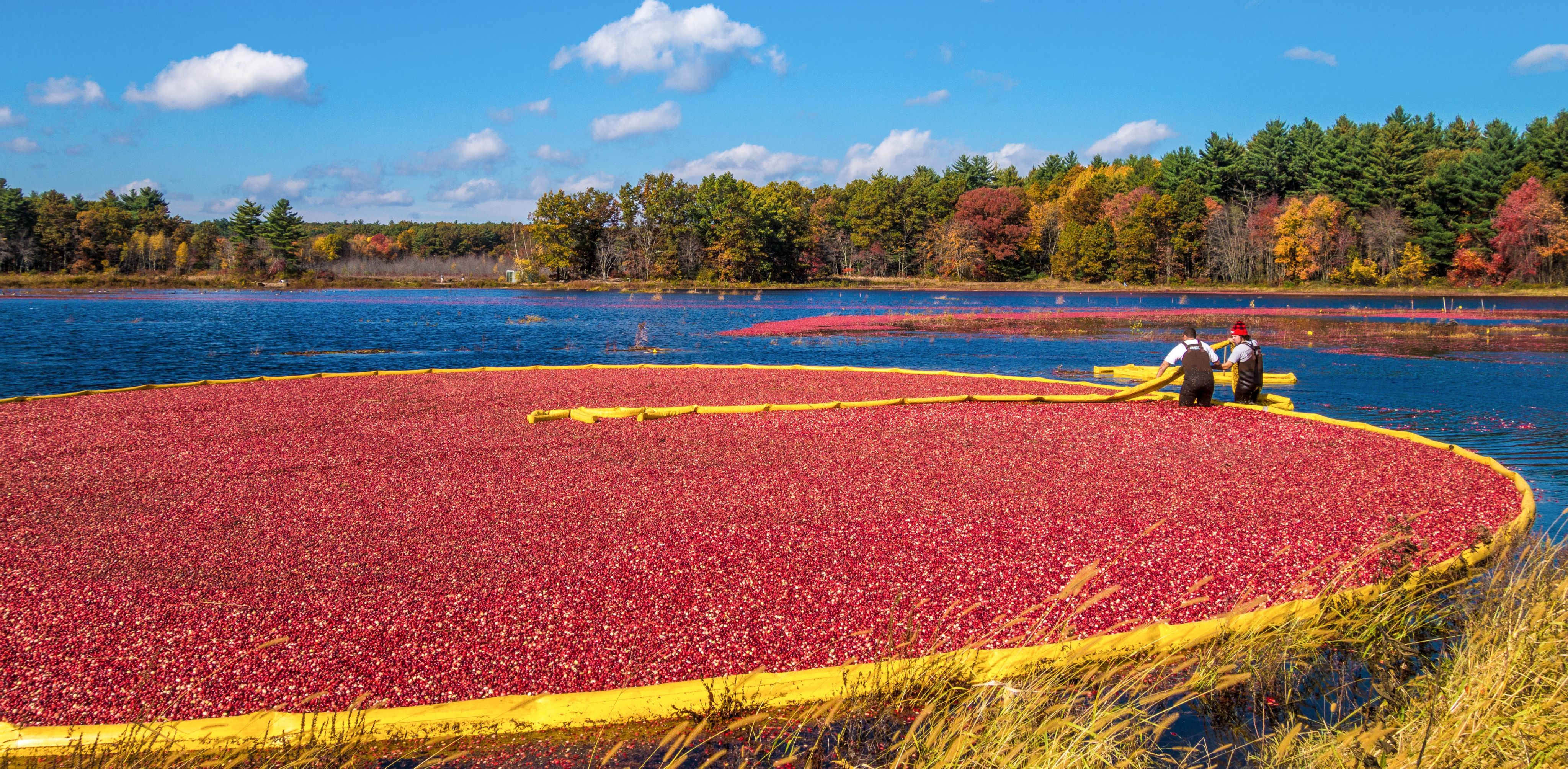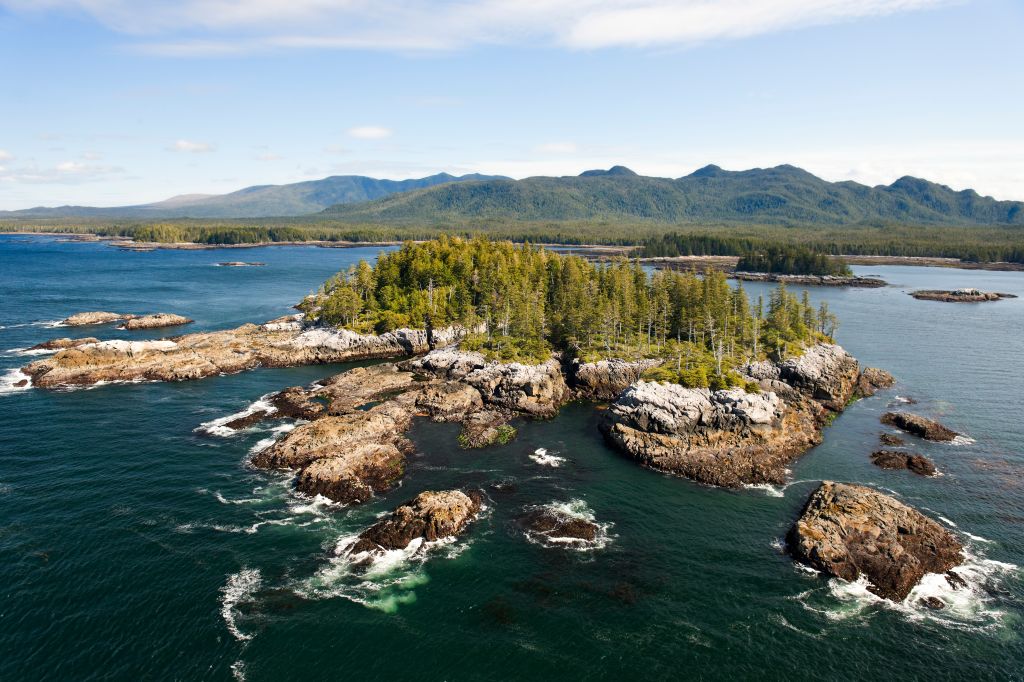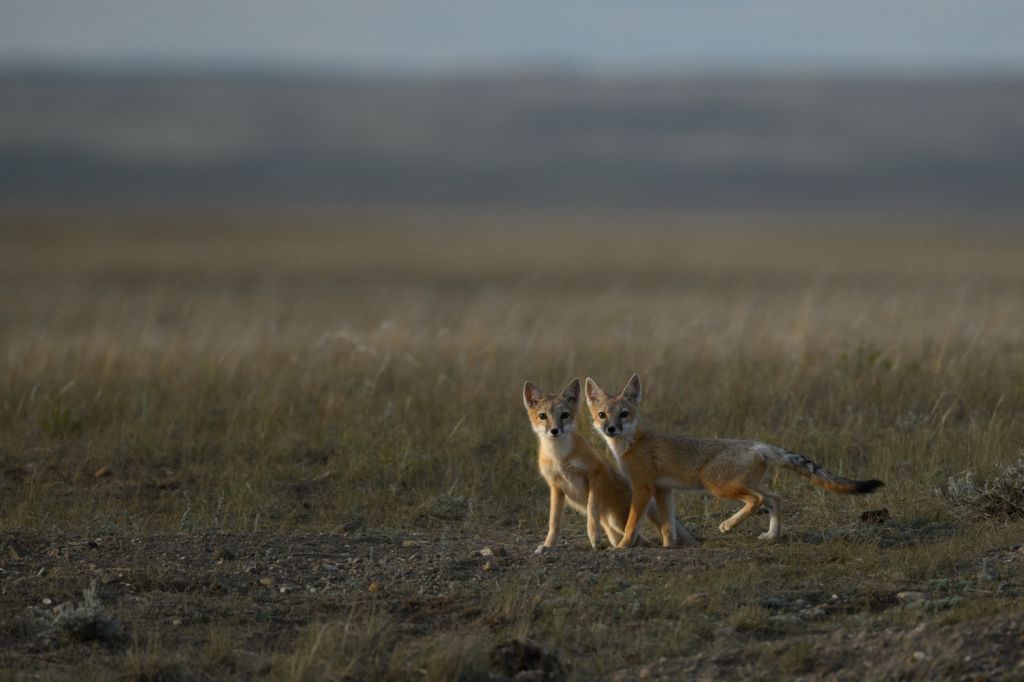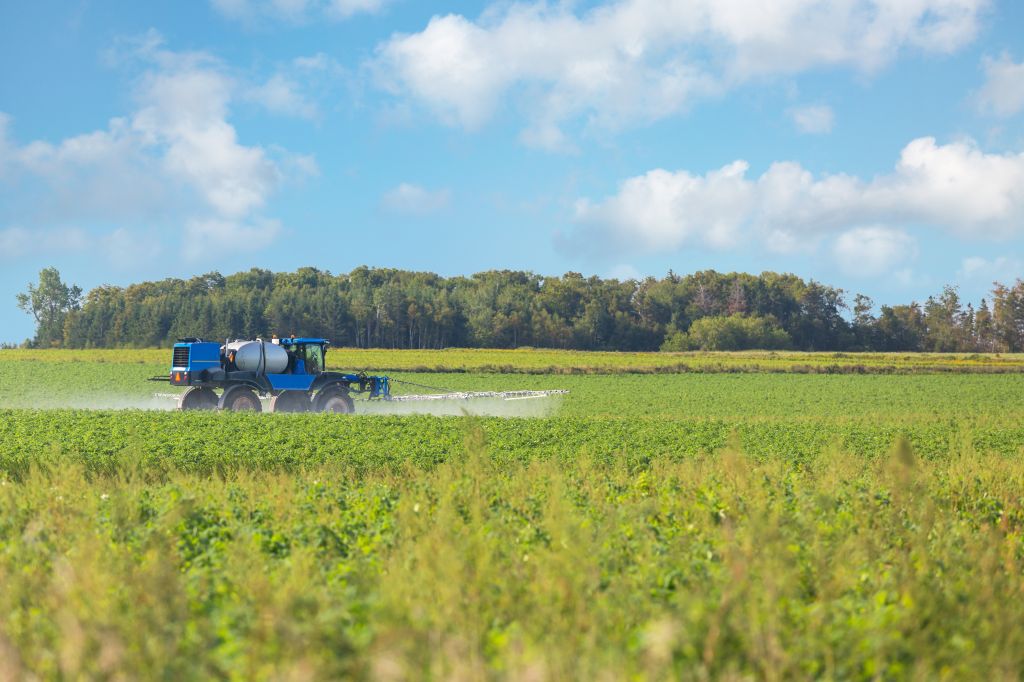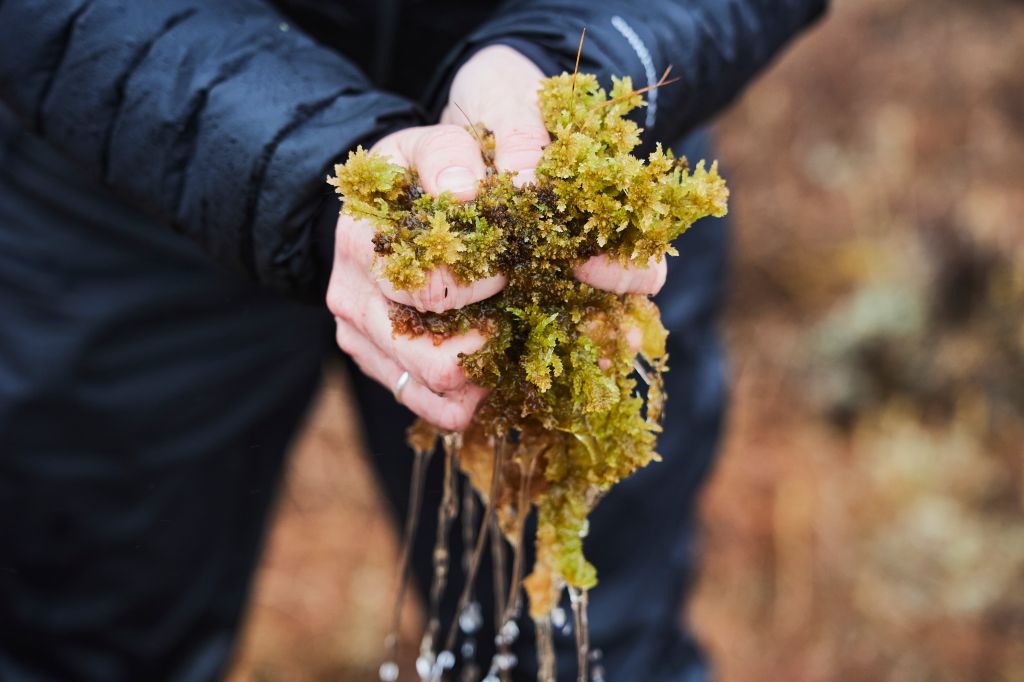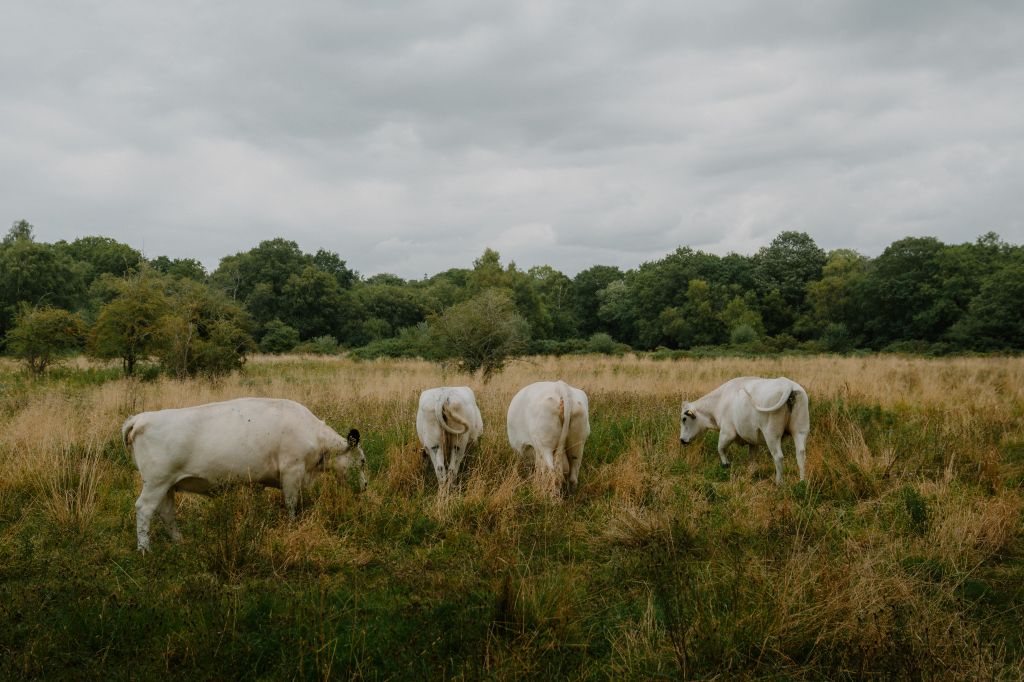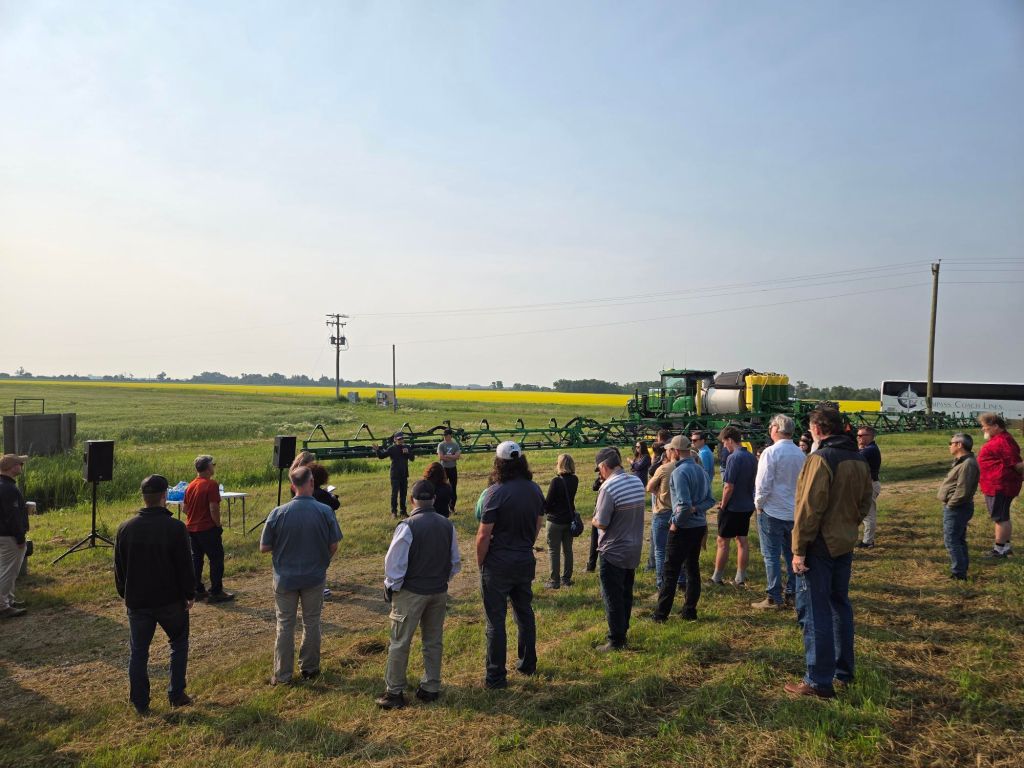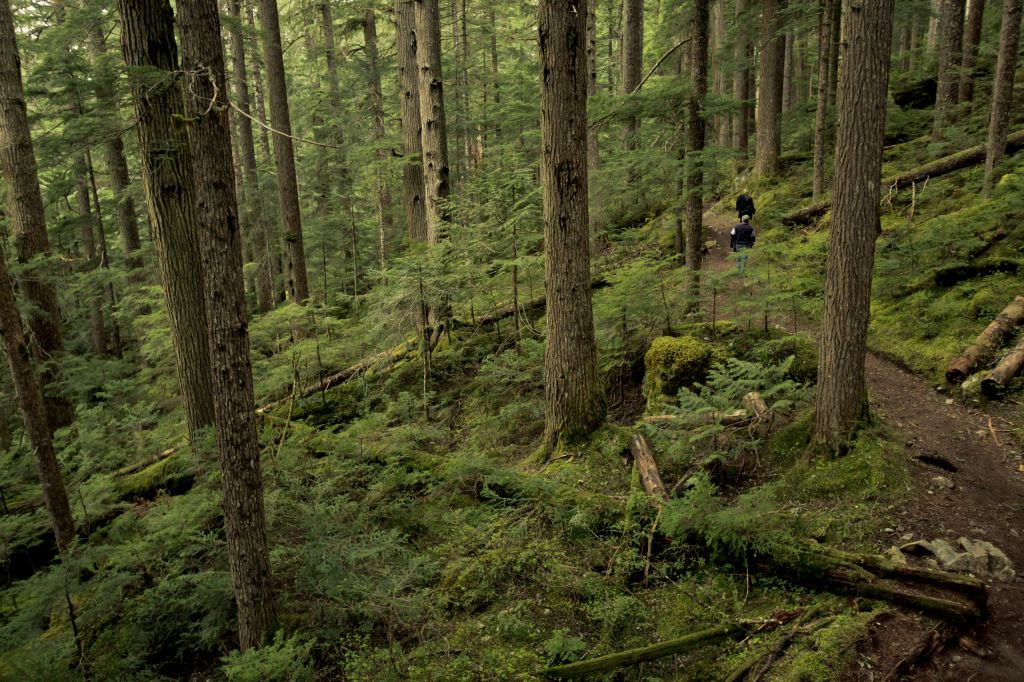Key takeaways
-
Natural capital remains an underused economic engine. The GDP of Canada’s nature-based sectors, including forestry, agriculture, mining and fisheries, grew 0.3% slower, year-over-year, compared to the rest of the economy over the past quarter century. A similar trend is observed in the United States and the United Kingdom.
-
Ignoring nature threatens prosperity. More than half of the world’s economy, roughly $78 trillion, depends on nature, from food to tourism to construction. Canada, the U.S. and the U.K. are looking to build back their economies, but the nature base their economies rely on for long-term growth is depleting, and its true value is not accounted.
-
There is a generational opportunity to leverage natural capital wealth through nation-building agendas. Countries that track and grow natural capital alongside GDP can unlock growth and attract global investors hunting for investable natural capital projects. With finance mobilizing to close the nature finance gap, demand is rising—and an estimated $580 billion is required annually by 2030. That will increase to nearly $940 billion by 2050.
-
Private capital is critical to closing the gap – and scaling. Governments currently account for 82% ($222 billion) of nature finance. Private sector would need stronger policy signals and assurance that their investments will generate returns.
-
Nature’s place in finance and environmental markets is growing but remains underrepresented. Nature is a small segment of sustainability finance. In 2025, nature-based carbon offsets have represented 13% of voluntary carbon credits but hold more than half of the annual potential of carbon credit creation.
-
Policy integration, AI, and…yes, accounting can get nature on the balance sheet and growth agenda. For Canada, a timely test for all three is the implementation of the Critical Minerals Strategy and emerging major mining projects.It starts withincluding Indigenous values and knowledge systems in natural capital accounting frameworks.
Why we wrote this
RBC launched the Climate Action Institute in 2023 to support Canadians in our collective journey to net-zero, with a commitment to inform, engage and act on all aspects of the climate challenge. Protecting, conserving, and growing natural assets is a critical part of the journey to net-zero.
Nature is a foundational asset in growing our economy. This is a timely issue as advanced economies like Canada, the U.K., and the U.S., push forward nation-building policy agendas and projects. But there’s a problem: Nature and the people who steward it–including Indigenous communities, farmers, fisherpersons, and fosterers–are often left off the balance sheet. This is the issue that the RBC Climate Action Institute and Nature United, the Canadian affiliate of the global conservation organization, The Nature Conservancy, dig into in this report.
From invisible to indispensable: Nature’s battle to be recognized in the economy
Building, consuming, and exporting more to boost GDP inevitably strains the forests, soils, and waters that make all growth possible. But pro-growth agendas also present a generational opportunity–to treat nature not as a cost to manage but as an asset to build, value, and leverage.
More than $78 trilliona of the global economy–roughly half of total GDP–is highly to moderately dependent on nature.1 Yet, national GDPs count nature only after it is extracted–fish, grain, timber–while mostly ignoring ecosystem services from nature. This includes carbon storage in agricultural soils, water filtration in healthy peatlands, and cultural and biodiversity benefits of intact forests. Valued at more than $200 trillion, ecosystem services remain largely invisible in economic accounts, leaving both a major source of growth and a growing source of risk unrecognized.2
Accounting nature’s true value has been an agenda item for global leaders at nature and climate change meetings for more than 30 years. When Brazil last hosted the world at the 1992 Earth Summit in Rio, leaders signed the first global agreements on climate and biodiversity. This Fall, at COP30, leaders are gathering again in Brazil and have the chance to finally put nature at the center of economic strategy.
Securing finance for nature continues to be a challenge. The vast majority is coming from governments, as industry has largely steered clear due, in part, to uncertainty around investment returns. Global public and private nature finance amounts to roughly $270 billion per year. To close the nature finance gap by 2030 more than $580 billion is required annually. That climbs to about $940 billion a year by 2050.3
A marriage between nature and pro-growth policy agendas provides an unprecedented opportunity to leverage nature as an investable asset. Building natural capital wealth provides a pathway to reboot nature-based sectors, including agriculture and forestry, and boost nature’s role in the built economy, including green infrastructure in housing developments. Investing in nature also mitigates economic losses, including the $3.3 trillion at risk, globally, if ecosystem services such as wild pollination or marine fisheries collapse due to over extraction.4
Canada, the U.S. and the U.K. have all set pro-growth agendas and offer three policy and economic models for nature integration. Roughly 7% of Canada’s GDP is from a nature-based sector–agriculture, mining, forestry and fisheries. Collectively, these sectors’ GDP growth has been 0.3% slower than the rest of the economy over the past quarter century.5 In the U.S., the Federal Reserve estimates that extreme weather events can negatively impact the country’s GDP by 0.5% annually.6 And natural protection, like coastal wetlands, are disappearing to developments, intensifying the impacts. If current trends persist, the U.K.’s management of its natural capital could cause GDP to shrink by roughly 5% by 2030.7
Nature is now both a reportable risk and an investable asset class. Yet, implementation is uneven. More than 90 countries, including Canada and Australia, have adopted natural capital accounting frameworks aligned with the United Nation’s System of Environmental-Economic Accounting (SEEA). But a gap remains in fully integrating natural capital into national GDP accounts and using natural capital accounting to guide large-scale investments. In the private sector, some regions–like the European Union–mandate sustainability reporting and encourage alignment with nature-related finance frameworks, such as the Taskforce on Nature-related Financial Disclosures (TNFD).
While the landscape of nature accounting and finance standards remains messy, these examples show that the policy and reporting scaffolding to treat nature as a cash-flow–relevant asset exists. Now, it’s time to streamline nature governance, improve accessibility for companies and governments by applying disruptive technologies like AI, and integrate it into pro-growth policy.
Three models for nature in pro-growth policy
The Canadian model: Rich in resources, searching for new growth drivers
Canada is abundant in natural assets—home to 25% of the world’s wetland, 24% of boreal forests, and 30% of the world’s freshwater—and, as noted above, roughly 7% of the country’s GDP directly depends on their stability and productivity and this dependency trickles down the supply chain.8
Canada’s approach to integrating nature into economic growth is driven by funding and finance packages, target setting, including the 2030 Nature Strategy, and the expansion of national parks and ecological corridors. These investments and commitments are enabling progress on conservation and nature protection. Yet, existing policy measures fall short in capitalizing on nature accounting frameworks to return that value to the people on the ground at scale.
Canada’s challenge with integrating nature into its pro-growth policy is balancing its natural resource dependent growth with its commitment to United Nations Declaration on the Rights of Indigenous Peoples, while also upholding its legislated climate commitments. A complex landscape to navigate. But a necessary one to ensure Canada’s nation-building projects do not undermine Indigenous peoples’ rights and knowledge systems, nor hollow out one if its greatest assets in nature.
The U.K. model: A natural resource-strapped country with outsized ambitions for use
The U.K. is one of the most nature depleted countries in the world with only half of its native wildlife intact.9 The country’s economy is primarily driven by service sectors like finance and real estate, while nature-based sectors account for roughly 2% of the economy.10 But, the country’s intense competition for natural assets and the rate of their depletion has ignited momentum for nature finance domestically. This momentum includes a call for recommendations on how the government can help expand the private sector’s role in nature recovery under the U.K. Government’s pro-growth strategy, Plan for Change.
A key component of the Plan for Change is the country’s ambitions to build 1.5 million homes and fast-track planning decisions on at least 150 major economic infrastructure projects, including the establishment of AI Growth Zones for data centres. Through the U.K.’s biodiversity net gain (BNG) and nutrient neutrality policies, a market-based opportunity for landowners and stewards to build up natural assets is integrated into these developments.11 This demonstrates that nature-focused U.K. policy is increasing and aligned with pro-growth policies.
But the country is still expected to fall short in both addressing GDP loses from natural capital depletion and achieving targets, such as conserving 30% of its biodiversity by 2030.12 The U.K. presents a challenge of nature restoration at scale, amidst intensifying and competing interests in natural assets. The water and land demands of housing, agriculture, and AI data centres expansion stresses the need for greater natural capital planning that informs nature positive economic growth options, beyond offsetting impacts.13
The U.S. model: An economic giant veering off course in valuing nature
Roughly 3% of the U.S.’s GDP is from nature-based sectors. And more than 10% of its GDP is highly exposed to nature, including industries that are down the supply chain of nature-based sectors, like food manufacturing.14 And yet, more than 40% of its natural ecosystems are said to be at risk of collapsing.15 In 2023, the Statistics for Environmental-Economic Decisions (SEED) program–informed by the SEEA framework–quantified the value of U.S. natural assets. This exercise valued private land at $43 trillion, about 30% of the U.S.’s net wealth. This positioned the federal government to make informed investments in conservation programs and green infrastructure developments, including the $1.3 billion delivered under the Inflation Reduction Act for urban greening.16
Under the Trump Administration, there has been a shift from accounting renewable natural assets on extracting non renewables. This is most notable under the Unleashing American Energy executive order, which revokes guidance to federal agencies to consider ecosystem services like a wetland’s contribution to flood management in project reviews. Newly proposed amendments to the One Big Beautiful Bill Act could also jeopardize a more than 100-year-old revenue-sharing agreement between the federal government and rural communities in forest management. This longstanding agreement returns 25% of the federal government’s profits from commercial logging to rural communities–where the logging takes place but doesn’t generate local property tax–to invest in local infrastructure. The amendments to the Act could redirect those funds back to the federal government and raise the minimum logging requirements.
Sidelining national efforts that account natural assets alongside GDP risks overlooking a source of economic growth and risk. The polarizing nature of U.S. federal politics calls for a rebranding of natural assets and their management that can withstand changes in administration. Most pressing is a communication strategy that stresses nature’s value within the federal administrations focus on a production-based economy.
Mobilizing capital to embed nature’s value in the economy
Finance and funding: The tidal wave for stimulating growth
| Funds | Dedicated investment funds that finance projects aimed at conserving, restoring, or sustainably managing natural capital. |
| Grants | Non-repayable funds given to support nature-related activities. |
| Subsidies | Financial incentives or support to encourage environmentally beneficial activities (e.g., tax breaks, or reduced fees) |
| Bonds | A fixed income debt instrument where proceeds from investors are specifically used for nature-based projects. |
| Loans | Borrowed funds for nature projects that must be repaid with interest or improved lending conditions. |
| Debt-for-nature-swaps | A deal where part of a country’s foreign debt is forgiven in exchange for commitments to fund conservation projects. |
Funds and financing can open the floodgates in creating a role for nature-based solutions in the economy. However, governments are largely footing the bill–providing 82% of nature finance flows, globally17–making it difficult to raise the funds required for transformational projects.
Project Finance for Permanence (PFP) in Canada is a breakthrough conservation finance model for matching long-term government, private, and community funding. The first PFP in Canada, Great Bear Rainforest, born from a community well-being crisis in First Nations and conflict over logging, is now repositioning nature as a source of prosperity and enabling Indigenous-led conservation and economic development opportunities. Since the inception of the Great Bear Rainforest PFP in 2007, more than $444 million has been invested.18
Building upon the momentum of the Great Bear Rainforest PFP, Coast Funds is now also overseeing the delivery of funds under the Great Bear Sea PFP. This PFP has an initial $335 million in funding, securing long-term Indigenous-led financing for Indigenous-led stewardship and development.19
Expanding conservation financing
Debt products for nature-based solutions can provide upfront capital, but projects must deliver competitive returns for investors and financers. Debt-for-nature swapping, for example, often engages development banks to help keep the cost of borrowing down and provide greater assurance to private investors. The debt-swapping market has more than doubled in the past year, totaling $3.6 billion.20 However, some nature finance experts say the structure for debt-for-nature swapping has expanded beyond its original purpose. They suggest that involving development banks and agencies in building natural capital helps build financing needed for projects as it reduces risks for other investors. However, the country receiving the funds should also consider how the debt swapping impacts their ability to control how their natural capital wealth is managed.
Green and sustainability-linked bonds and loans have also grown into significant debt products, with nearly $15 trillion in value to-date.21 Yet, nature focused debt remains a relatively small slice of total bond funds allocated. Over the past year, less than 10% of proceeds from green and sustainability-linked bonds explicitly went towards nature-based projects. While nature-based projects mature in their ability to guarantee returns for investors, the government and impact investor’s roles in scaling debt products for nature remain critical.
Beyond funding and finance, governments can also use their authority to recognize high-integrity nature-based projects to attract private dollars. Environment and Climate Change Canada, for instance, is piloting a Conservation Exchange. In the pilot, the federal government is testing an approach that recognizes the proven benefits of conservation projects funded by companies through government approved biodiversity certificates.22 Building from a long-term funding relationship, insurance firm Aviva and the Nature Conservancy of Canada are leveraging the Conservation Exchange pilot to deliver value through nature’s role in risk management and revitalizing working lands, like range pastures on restored native grasslands.
Streamlining policies to optimize public investment
While governments are driving investment in solutions, they may also be undercutting progress. The United Nations Environment Program finds that public finance flows to nature-based solutions are less than one-tenth of public spending on environmentally harmful subsidies. This issue is especially of concern in agriculture. Farmers in Canada, for instance, can receive funds for sustainable practices under the On-Farm Climate Action Fund, supporting the adoption of cover crops and improved fertilizer practices. And they can access government subsidized crop insurance, which some farmers are finding can incentivize growing crops on marginal land that would otherwise be uneconomical.23 24 Similar examples can be found in the U.S. under the Federal Crop Insurance Program. Some states are taking steps to address the mismatch between government safety nets and supports for sustainable agriculture by offering programs such as insurance premium discounts for farmers who adopt sustainable practices, like the Iowa Department of Agriculture & Land Stewardship’s Crop Insurance Discount Program for cover crop adoption.
Governments and the private sector have also struggled to expand market-based incentives for nature-based projects. Some farmers are taking note and using government grants to kickstart grassroot initiatives that give them control over how the value of ecosystem services is integrated into their business and recognized in the marketplace. The Prince Edward Island Federation of Agriculture, for example, learned early in their GHG mitigation journey the importance of robust data collection and monitoring of soil carbon to tap into carbon markets. Spurred by local leadership, the federation is helping position farmers to align practices with carbon offset protocols and build algorithms and data standards to unlock carbon value and improve efficiency.
Harnessing markets to promote nature and raise revenue
| Offset markets | Trading system where those wanting to offset their environmental impacts compensate others for creating environmental benefits elsewhere. |
| Inset schemes | Reducing or compensating environmental impacts within a company’s own value chain. A company invests in nature and climate-positive projects directly linked to its suppliers, operations, or distribution. |
| Premiums | Paying extra for sustainable products or services to cover the higher cost of low-carbon or nature-friendly options. Consumers or buyers along the supply chain pay a higher price or give preferential treatment for sustainable production or nature protection. |
| Market access | Gaining entry to markets by meeting specific sustainability standards or certifications. |
Marketplaces for ecosystem services cover a growing range of outcomes, including water quality trading schemes in the U.S., emerging biodiversity markets, like those in Australia, and compliance carbon markets in the EU. Yet, market activity is primarily focused on producing credits from greenhouse gas (GHG) emission reductions, removals and avoidances through compliance and voluntary carbon schemes. Cumulatively, $15.3 billion in credits have been traded on the voluntary offset carbon market. Peaking in 2021 at $2.6 billion, there has been a steady fall in market activity with 2024 being a 5-year low with traded credits valued at $727 million.25 This decline can be attributed to compounding factors including the market going through a maturity phase with the onboarding of additional integrity and assurance guardrails, and macroeconomic volatility since the coronavirus pandemic.
Despite the market downturn, nature is banking on a maturing carbon market to drive finance. The voluntary offset market is still going through a transition phase, focused on raising the quality of credits on the market and aligning with compliance market standards. An early sign from the voluntary offset market reset is a higher demand for quality, nature-based projects that produce GHG removal credits. It’s an opportunity for nature-based projects that actively pull carbon dioxide from the atmosphere through active management and restoration of carbon sinks, including wetlands, croplands, forests, grasslands, and sea bottoms. Recent developments in nature-based offset protocols provide the frameworks needed to produce GHG removal credits that are in demand.
Blue carbon, for example, has the potential to remove three gigatons of carbon from the atmosphere per year, equivalent to more than 3% of global emissions.26 With the development of blue carbon protocols like the Tidal Wetland and Seagrass Restoration on VERRA’s carbon offset registry, communities and landowners restoring seagrasses can see returns from their conservation efforts in the marketplace. A seagrass restoration project in the eastern coastal bays of Virginia that includes researchers, conservationists, the local community, and the Commonwealth of Virginia serves as a proof of concept for how to bring a blue carbon project to the marketplace, including the amendment of laws, as the state owns the coastal sea bottom.
While nature-based protocols have allowed for increased market access, nature-based carbon offsets account for only 13% of voluntary carbon credits issued in 2025 to-date but hold more than 50% of annual carbon credit potential.27
Patient investors are key to big nature returns
Bringing quality nature-based projects to market takes time. The long-term nature of ecological changes and the inherent difficulty in attributing specific, measurable biodiversity outcomes to a single intervention adds to the complexity and cost.
Carbon offset creation from nature-based projects, for instance, can take decades to verify. This presented those involved in a peatland restoration project in Scotland’s highlands with a challenge: find investors who are willing to wait patiently for their returns. One way is to seek advanced market commitments from buyers through pending credit returns for carbon removals or biodiversity benefits that have higher value in the marketplace but take longer to generate, compared to renewable energy projects that can often generate credits the day they are turned on. A recent precedent is the Symbiosis Coalition, made up of Microsoft, Google, Salesforce, Meta and McKinsey & Company. These large-scale organizations provide assurance to more risk-averse investors.
Recognizing that farmers, foresters, and fisherpersons, cannot take on all the risk in investing in building natural capital, a growing movement has started to advance sustainable farming practices through supply-chain funding and incentives. Investments are coming from buyers including PepsiCo to input providers like fertilizer companies Nutrien and Yara through a variety of mechanisms including inset programs, payment for practices and green premiums, totaling more than $1.6 billion publicly committed by companies to-date.28
Raising the bar on sustainable supply chains
Green premiums—the higher prices paid for products that meet sustainability standards—and favorable market access conditions tied to sustainability criteria play a powerful role in encouraging sustainable practices. But a key question remains: Who will pay the premium? Often, it’s assumed it will be the end buyer, but in practice, end buyers need a market signal for paying the premium. As a result, premiums in the marketplace are sporadic. Most recently, farmers growing biofuel feedstocks like canola, soybeans and corn are seeing green premiums emerge in the marketplace to prove the sustainability of their production to access markets like the EU and U.S.
Green premiums are often underpinned by certifications that more broadly encourage responsible management of resources and community well-being and set standards for associated practices. Globally, these certifications are growing in market share with 19% of all wild marine catch engaged with Marine Stewardship Council (MSC) and roughly 200,000-million hectares of global forests certified under Forest Stewardship Council (FSC).29 30
While these certifications have been critiqued for their rigor, they are proving to advance and track practice implementation on-the-ground. For example, mammal monitoring in Gabon and the Republic of Congo shows there is greater diversity in species in FSC-certified forests compared to uncertified forests.31 Such certifications remain one of the few approaches available at scale that drive market standardization around sustainable use of natural assets and enable supply chain recognition and incentivization.
These industry-based certifications often operate outside of government, but governments are also stimulating markets for nature. In the U.K., under the Biodiversity Net Gain scheme, biodiversity credit payments totaled more than $360,000 in the first year of operation (2024 to 2025).32 A market-mechanism that creates value for those managing natural assets like farmers, outside of development zones, as well as incentivizing developers to integrate nature within their new builds. Wendling Beck, a collaboration led by four farmers in Norfolk County, U.K., is demonstrating how farmers can capitalize on revenue opportunities in environmental markets, while also producing food.
Unlocking nature’s potential through business models
| Triple-bottom line | A business framework that measures success across three dimensions: People (social), Planet (environmental), and Profit (economic). Companies integrate social and environmental performance into their strategies alongside financial performance, often tracking metrics for each dimension. |
| Sustainable products and services | Business models that design, produce, and deliver goods/services with minimal negative environmental and social impact, often with positive contributions. Products/services are designed for reduced resource use, circularity, ethical sourcing, and/or social benefit, marketed as sustainable options. |
Over the past year, nature has climbed the priority list for corporate ESG reporting. A Stanford University Business School survey of investors found that sustainability of supply chains and natural capital are 3rd and 4th on the priority list of environmental factors they consider when it comes to a company’ ESG reporting.33 Climate action remains the top consideration in environment and in the top three topics of investor ESG engagement across the three pillars of ESG. That’s an important consideration since nature and climate issues are interconnected, especially for nature-based sectors like forestry where investors’ key interests for ESG engagement with companies is risk mitigation.34
This growing focus on nature is a response from investor demand and recognition of the risks if natural capital is not managed responsibly by businesses. Over 27 pension funds at COP16 UN Biodiversity Summit in Colombia in 2024 called out government inaction, demanding greater regulations and standards to tackle the nature crisis. Black Rock publicly stated that sustaining nature–water, soil carbon, and biodiversity–is a foundational asset class. Goldman Sachs launched a Biodiversity Bond Fund with the goal of raising more than $700 million. Norway’s Government Pension Fund Global, which manages $2.1 trillion in assets, released an assessment of nature-related risks across approximately 90% of its portfolio.35
Community driven business models that work
A growing number of investors are on the hunt for companies that can demonstrate durability in their relationship with and use of natural assets. Companies that reduce their ecosystem impact intensity and land and carbon footprint also perform better. Annualized over 5-years, the S&P 500 Biodiversity Index slight outperforms the S&P 500 Index by 0.26%.b
Rethinking conventional business models for companies and industries reliant on natural assets is an opportunity to reposition nature’s strategic role in a growing economy. But buy-in and evidence at the ground-level is essential. A Canadian Prairies-based collective of farmers, conservation organizations, and corporates are working together to understand if water stewardship plans in the Lake Winnipeg Basin is good for business. Driven by curiosity, this group is creating a model for evaluating farmer returns on investments and profit margins with nature accounting integrated, which is replicable and scalable to any farming region.
In a triple bottom line business model, multiple revenue streams can help alleviate friction between environment, community resilience, and economic growth objectives. An enabling finance and policy environment helps, too. An ecosystem-based management plan that mapped the multiple environmental, community and economic objectives of forest management, positioned the Cheakamus Community Forest surrounding Whistler, B.C., to build a resilient business model that balances revenue from ecosystem services and logging.
Bottom line: How accounting, policy and AI can boost investment further
Nature accounting: Getting it on the books
Used properly, nature accounting can result in smarter projects, resilient supply chains, reduced disaster losses, and pipelines of investable natural assets–turning ecosystems into wealth drivers. But frameworks like the UN’s SEEA that already exist need more use cases to demonstrate its value informing investments.
In Canada, the Critical Minerals Strategy and major projects that fall within could be a litmus test for implementing SEEA in project assessments and plans to mobilize capital. However, inclusion of Indigenous lands, values, and knowledge in SEEA framework is critical in closing the gap between Free, Prior, and Informed Consent (FPIC) and nature accounting metrics. Indigenous rights and knowledge must be at the core of nature accounting—so economic growth builds natural capital wealth and respects those who steward it.
Embedding natural capital values in impact assessments and broader pro-growth agendas like the U.K.’s Plan for Change could ensure that new developments unlock investment for green infrastructure and proceed where water use demands can be met. Nature accounting in the Thames Valley, one of the U.K.’s most water-stressed regions, could transform how housing and infrastructure projects are assessed. Leveraging nature as an asset in development and land-use decision making can reframe local authorities and developers’ approach in weighing the economic costs and trade-offs of water management and broaden the suite of options, including grey, green and hybrid options. Finally, consider the Chesapeake Bay watershed, covering six states along eastern shores of the U.S., which faces some of the highest nutrient pollution in the country from industry, agriculture and urban runoff, causing degraded water quality, habitat loss, and economic impacts on fisheries and recreation.36 Integrating natural capital values into infrastructure and land-use planning would enable targeted investments in green infrastructure and ecosystem services. It also presents an opportunity for farmers in the region to replicate the approach taken by the farmers in the Lake Winnipeg Basin Project case study to drive investment in agricultural-based water stewardship.
Policy integration: Net-new is not necessary to move money and rules toward nature-positive growth
Integrating government funding with plans to build supply of carbon offset projects in compliance offset markets is one key area for policy integration to grow, while ensuring projects adhere to additionality principles. In Canada, offset protocols for forestry and agriculture are emerging on the Federal GHG Offset System, yet farmers, as demonstrated by the Prince Edward Island Federation of Agriculture’s case study, are generally ill-equipped to meet data quality and record keeping requirements of carbon offset projects. Leveraging existing funding programs, like the nearly $500 million Agricultural Clean Technology program is an opportunity to address this challenge. Supporting farmers in navigating how their investments in hardware and software can help them collect the necessary data to access carbon incentives could help build the supply of nature-based offset projects on the Federal GHG Offset System and improve funding program outcomes.
The explicit inclusion and prioritization of nature-based sectors and green infrastructure projects in government-led growth funds is another launch pad for integrating nature into pro-growth agendas. The forthcoming United States Sovereign Wealth Fund, the nearly-$50 billion National Wealth Fund in the U.K., and the $15-billion Canada Growth Fund are places to start in prioritizing investable nature-based and natural capital wealth projects.
Finally, improving the community resilience and potentially reduce costs in the housing development boom is an imminent policy integration opportunity. The U.K. is driving action through the biodiversity net gain scheme–an opportunity to crowd in greater private capital. In Canada, there is an opportunity to use the National Adaptation Strategy to mainstream nature-based projects in municipal housing programs tied to federal funds including, the Canada Housing Infrastructure Fund (CHIF). The CHIF has committed to investing CAD$6 billion over 10 years in housing development water and wastewater management.
Embracing disruptive technology: Enable AI to streamline nature governance and build natural capital
Nature accounting and governance is deeply complex. There are numerous protocols, frameworks and standards for measuring, monitoring, accounting, reporting, and verifying natural assets and their ecosystem services. Since this governance network of standards and framework is critical to ensure rigor in nature accounting, there is a need to simplify it to ease adoption. Learning from countries like Estonia, a leader in implementing AI to transform public administration, is an opportunity for the nature and conservation sector to advance the implementation of nature standards and frameworks like SEEA.
Nature-based projects that assess outcomes and monitor progress can also leverage AI to automatically process satellite imagery, remote sensing, sensors, and public datasets to monitor ecosystems in near real time, reducing manual data collection costs and improving accuracy. Of course, the cost of powering AI can’t be ignored. AI data centres are a growing competitor in the demand for land, water and energy. It is a strategic imperative, especially among countries with depleting natural resources like the U.K., to leverage natural capital in determining where it is possible to build a clean fleet of AI data centres. In addition to location, design features are critical in mitigate natural resource use, like rainwater harvesting or net-positive watering, which can return clean water back to neighbouring landscapes. To ease pressure on land, the use of heat offtake can also position AI data centres to have a dual purpose in, for example, greenhouse food production.
Pro-growth agendas need to do more than extract for wealth, they need to build natural assets that sustain wealth today and for the future. Nations that do so can shift control and value of natural wealth to those who steward it. Global finance is already moving, and investors are on the hunt for impactful natural capital projects that generate returns. Countries that account and build their natural capital wealth can be home to this investment. This opportunity requires a shift in government and business approaches, treating natural capital, not as a regulatory box to tick or a nice to have, but as foundational for growth – the wealth beneath wealth.
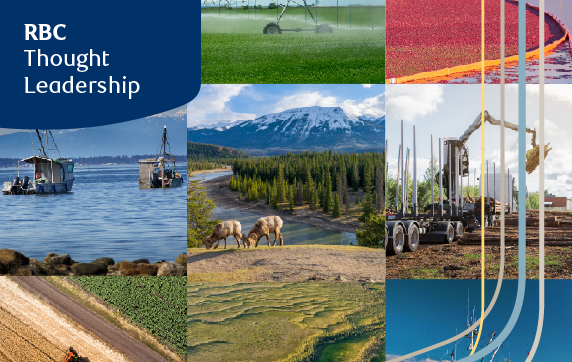
Download the Report
Author
Lisa Ashton, Director Agriculture Policy, RBC Thought Leadership
Co-Authors
Ronnie Drever, Senior Conservation Scientist, Nature United
Martha Rogers, Senior Economist, The Nature Conservancy (Global affiliate of Nature United)
Our project partner

Values are in Canadian dollars unless specified.
The Biodiversity Index Launch Date is Feb 05, 2024. The index Backward Data Assumption Date is Jun 22, 2020.
Andrew Day, BC Parks Foundation
Audrey Popa, Coast Funds
Chance Cutrano, Resource Renewal Institute
Chuck Rumsey, Ecotrust Canada
Craig Harding, Nature Conservancy of Canada
Craig Losos, Nature Conservancy of Canada
Dave Secord, Salazar Center for North American Conservation
Deb Davidson, Center for Large Landscape Conservation
Donald Killorn PEI Federation of Agriculture
Eddy Adra, Coast Funds
Glenn Anderson, Wendling Beck Environment Project
Heather Beresford, Cheakamus Community Forest
Holly Story, UK National Parks
Jane Church, Nature United
Jennifer Gunter, British Columbia Community Forests Association
Jill Bieri , The Nature Conservancy
Katie Davis, Wildlands Network
Leah Blechschmidt, Nature United
Leslie Harroun, Salazar Center for North American Conservation
Lisa Mclaughlin, Nature Conservancy of Canada
Maas, Tony, Nature United
María José González, MAR Fund
Matthew Mitchell, University of British Columbia
Maya Kocian, Earth Economics
Meg Lovett, Nature Conservancy of Canada
Mike Nemeth, Nutrien
Raine Playfair, Coast Funds
Risa Smith, IUCN/World Commission on Protected Areas
Ross Dixon, Coast Funds
Sara Aminzadeh, California Natural Resources Agency
Stephanie Walker, Revere
Stephenne Harding, Great Northern Strategies
Steven Nitah, Nature for Justice Canada
Susan Mulkey, British Columbia Community Forests Association
PwC. Centre for Nature Positive Business, 2023.
Costanza et al. Changes in the global value of ecosystem services. Global Environmental Changes, 2014.
United Nations Environment Programme (UNEP). 2023 State of Finance for Nature, 2023.
World Bank. The Economic Case for Nature, 2021.
Statistics Canada. Gross domestic product (GDP) at basic prices, by industry, annual average, industry detail (x 1,000,000), 2025.
Bodenstein, M. and Scaramucci, M. On the GDP Effects of Severe Physical Hazards. Board of Governors of the Federal Reserve System, 2024.
Green Finance Institute. Business Investment in Nature: Supporting UK Economic Resilience and Growth, 2025.
Environment and Climate Change Canada (ECCC). Canada’s 2030 Nature Strategy: Halting and Reversing Biodiversity Loss in Canada, 2024.
Natural History Museum. Analysis warns global biodiversity is below ‘safe limit’ ahead of COP 15, 2021.
Office of National Statistics. GDP Output Approach, 2025.
United Kingdom Department for Communities and Local Government. Land value estimates for policy appraisal, 2015.
United Kingdom Parliament. Restoring 30% of England’s land and sea by 2030: House of Lords Environment and Climate Change Committee report. House of Lords, 2024.
United Kingdom Water Agency. National Framework for Water Resources 2025: water for growth, nature and a resilient future, 2025.
World Economic Forum (WEF). Nature Risk Rising: Why the Crisis Engulfing Nature Matters for Business and the Economy, 2020.
NatureServe. Biodiversity in Focus: United States Edition, 2023.
The White House. A Successful Inaugural Year for Natural Capital Accounting in the United States, 2024.
UNEP, 2023.
Coast Funds. Great Bear Sea, 2024.
Fisheries and Oceans Canada. Great Bear Sea Project Finance for Permanence, 2024.
White, N. Swaps Pioneered by Credit Suisse Get Recast in Age of War. Bloomberg, 2025.
BloombergNEF. Sustainable Finance, 2025.
Environment and Climate Change Canada. Conservation Exchange Pilot, 2024.
Farmers for Climate Solutions. Business Risk Management Report, 2022.
Agriculture and Agri-Food Canada (AAFC). Evaluation of AgriInsurance, 2024.
Ecosystem Marketplace. State of the Voluntary Carbon Market 2025, 2025.
McKinsey and Company. Blue carbon: The potential of coastal and oceanic climate action, 2022.
BloombergNEF, 2025.
BloombergNEF, 2025.
Marine Stewardship Council. Annual Report 2022-23 summary, 2023.
Forest Stewardship Council, 2024.
Zwerts, J.A. et al. FSC-certified forest management benefits large mammals compared to non-FSC. Nature 2024.
Department of Environment, Food and Rural Affairs (DEFRA). Biodiversity net gain statutory credits: annual report 2024 to 2025, 2025.
Graduate School of Stanford Business. 2024 Institutional Investor Survey on Sustainability, 2025.
Harvard Law School Forum on Corporate Governance. Global Institutional Investor Survey 2024 Report, 2025.
Nicholles, N. Why valuing nature and people is just as important as financials. Reuters, 2025.
Environment Protection Agency (EPA). Addressing Nutrient Pollution in the Chesapeake Bay, 2025.
Coast Funds. Great Bear Rainforest and Haida Gwaii.
Coast Funds. Project Investments.
Coast Funds. Taan Forest: Protecting Haida Values through Sustainable Forestry.
Coast Funds. 2024 Annual Report, 2025.
Coast Funds. Finance for Forests: A Guide to Conservation Finance Options for First Nations’ Conservation and Stewardship, 2024.
Coast Funds. Taan Forest: Protecting Haida Values through Sustainable Forestry.
Agriculture and Agri-Food Canada. Canada’s grasslands: Genomic discoveries for a greener tomorrow, 2024.
Nature Canada. Grasslands.
Agriculture and Agri-Food Canada. Canadian Drought Monitor.
Insurance Bureau of Canada. Summer 2024 shatters records for severe weather damage: Over $7 billion in insured losses from floods, fires and hailstorms, 2024.
NatureScot. Restoring Scotland’s Peatlands, 2025.
Moxey, A. and Moran, D. UK peatland restoration: Some economic arithmetic, Science of the Total Environment, 2014.
The Nature Conservancy. Restoring Eelgrass on Virginia’s Eastern Shore, 2024.
The Country Side Charity – Norfolk. Dry Norfolk, 2019.
Green Finance Institute. The Wendling Beck Project, 2025.
Environment and Climate Change Canada (ECCC). Progress Report on the Lake Winnipeg Basin Initiative.
Nutrien. Nutrien’s commitment to water stewardship demonstrated in Manitoba water project, 2023.
Nutrien. Investing in Sustainable Practices Pays.
British Columbia Community Forest Association.
Cheakamus Community Forest. Carbon Project.
This article is intended as general information only and is not to be relied upon as constituting legal, financial or other professional advice. The reader is solely liable for any use of the information contained in this document and Royal Bank of Canada (“RBC”) nor any of its affiliates nor any of their respective directors, officers, employees or agents shall be held responsible for any direct or indirect damages arising from the use of this document by the reader. A professional advisor should be consulted regarding your specific situation. Information presented is believed to be factual and up-to-date but we do not guarantee its accuracy and it should not be regarded as a complete analysis of the subjects discussed. All expressions of opinion reflect the judgment of the authors as of the date of publication and are subject to change. No endorsement of any third parties or their advice, opinions, information, products or services is expressly given or implied by Royal Bank of Canada or any of its affiliates.
This document may contain forward-looking statements within the meaning of certain securities laws, which are subject to RBC’s caution regarding forward-looking statements. ESG (including climate) metrics, data and other information contained on this website are or may be based on assumptions, estimates and judgements. For cautionary statements relating to the information on this website, refer to the “Caution regarding forward-looking statements” and the “Important notice regarding this document” sections in our latest climate report or sustainability report, available at: https://www.rbc.com/our-impact/sustainability-reporting/index.html. Except as required by law, none of RBC nor any of its affiliates undertake to update any information in this document.


